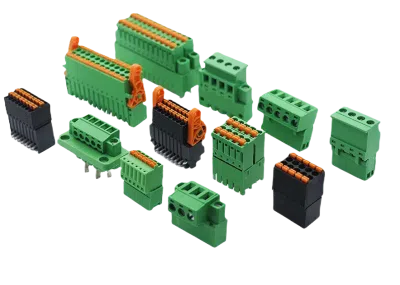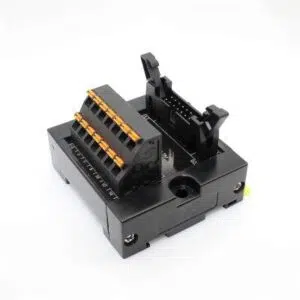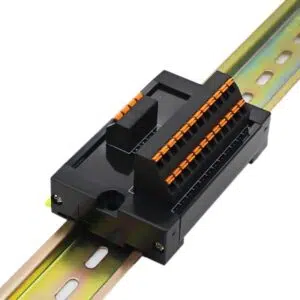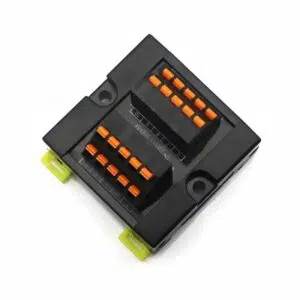A pluggable terminal block is an electrical connection component typically composed of two parts: a removable plug (male connector) and a receptacle (female connector) fixed to a circuit board or other base. Its core characteristic is its “pluggability,” meaning it allows for quick and safe establishment or disconnection of electrical connections with minimal or no tools. They are primarily used to connect wires to electronic circuit boards or equipment, offering a modular, repeatable wiring solution.
Different types of Pluggable Terminal Blocks
Pluggable terminal blocks come in a wide variety, and they can be classified based on their connection method, pitch, number of positions, and orientation to suit diverse application requirements.
By Connection Method:
- Screw Connection: One of the most common types, where a screw is tightened to clamp the wire, providing a very secure connection.
- Spring Clamp Connection: Uses spring force to clamp the wire, requiring no tools or only a small screwdriver for operation. It offers quick wiring and good vibration resistance.
- Push-in Connection: Requires no tools; simply push the stripped wire directly into the terminal hole, and an internal spring mechanism automatically clamps it, providing high efficiency.
By Pitch:
Pitch refers to the distance between the center points of adjacent pins or terminals, and it’s a crucial parameter when selecting a terminal block. Common pitches include:
- 2.54mm (.100″): Often used in compact, high-density electronic devices.
- 3.81mm (.150″): Intermediate between compact and standard, balancing density and operational space.
- 5.0mm (.197″): A very common standard pitch in industrial control and power applications.
- 5.08mm (.200″): Similar to 5.0mm, also a frequently used specification in industrial settings.
- Other pitches like 7.62mm, 10.16mm, etc., are suitable for high current or specialized applications.
By Positions:
The number of positions in a terminal block refers to the number of wires it can connect. From a minimum of 2 positions to multi-position blocks (dozens or even hundreds of positions), the appropriate number should be chosen based on actual circuit needs. For example, PLC modules often require multi-position terminal blocks to connect a large number of input/output signals.
By Orientation:
- Right-Angle/Horizontal: The receptacle pins are parallel to the PCB surface, and the wiring direction is parallel to the PCB.
- Vertical: The receptacle pins are perpendicular to the PCB surface, and the wiring direction is perpendicular to the PCB.
- Angled/Offset: Positioned between right-angle and vertical, offering a certain tilt angle for easier operation.
Component Aspect | Matching Requirements |
Number of Poles | Must be identical (e.g., 2P, 3P, 8P, 24P, etc.) |
Pitch (Spacing) | Common standards: 2.5mm, 2.54mm, 3.5mm, 3.81mm, 5.0mm, 5.08mm,7.5mm, 7.62mm (ensure PCB compatibility) |
Mating Direction | Vertical (180°), Right-angle (90°), or Slanted (45°) |
Housing Design | Includes coding ribs, locking clips, anti-mismatch features |
When using pluggable terminal blocks, it’s essential to pair the male header and female socket correctly to ensure secure electrical performance and long-term reliability. At AOSI, we provide a wide range of compatible plug-in connector components designed to work seamlessly together.
- The female connector typically accommodates the field wiring and features options such as screw or spring clamp types. It is designed with locking structures for secure mating and easy maintenance.
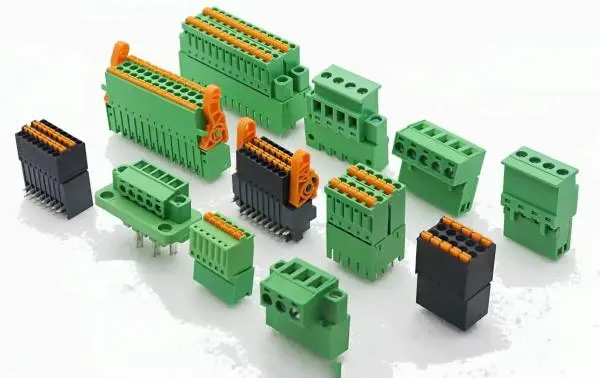
- The male header is soldered onto the PCB and aligned precisely to the corresponding female socket. Variants include straight, angled, and flange-mounted options, suitable for different layout and installation needs.
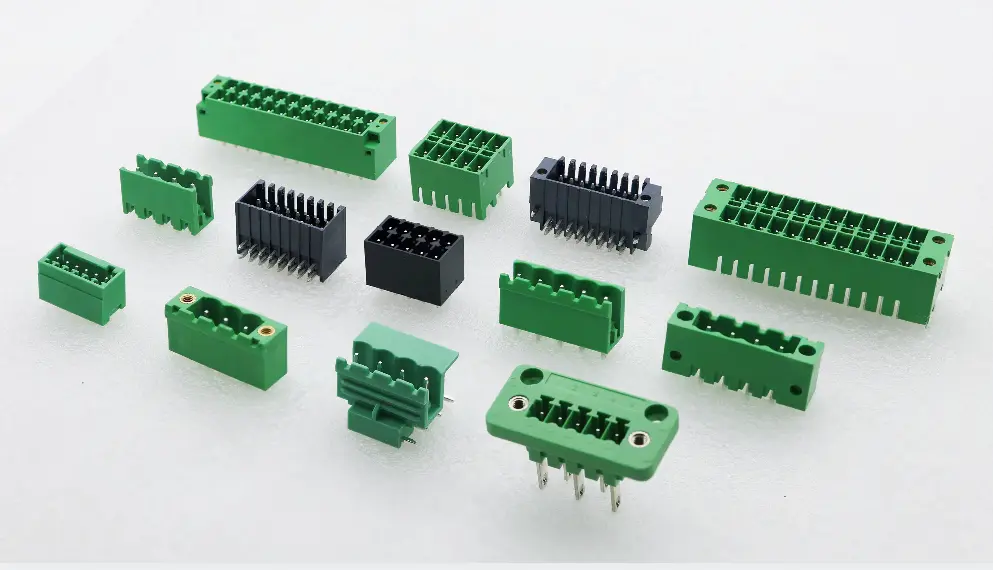
Advantages of Pluggable Terminal Blocks
The widespread adoption of pluggable terminal blocks is due to their numerous significant advantages:
Convenience: This is their biggest selling point. Pre-wiring capabilities and quick plug-and-play features significantly reduce on-site installation and equipment commissioning time, lowering labor costs. During equipment maintenance or upgrades, simply unplugging and replacing a module eliminates the need for re-wiring.
Reliability: High-quality pluggable terminal blocks use premium materials and precise manufacturing processes to ensure stable connections. Their design effectively resists vibration and shock, reducing the risk of loose connections and poor contact, thereby enhancing the overall operational stability of the system.
Flexibility: The modular design makes system construction much more flexible. Users can easily add, remove, or replace functional modules as needed, facilitating system expansion, functional upgrades, or customized configurations.
Safety: Good insulation materials and a sensible structural design effectively prevent short circuits and electric shock risks. Many products also feature anti-mis-mating designs to ensure correct connections.
What Make It a Reliable and Efficient Solution
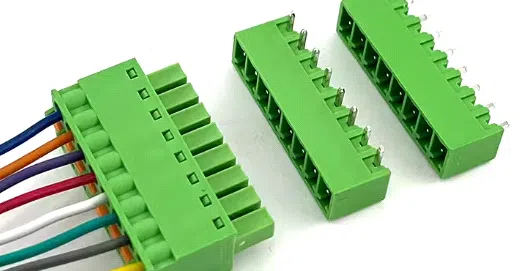
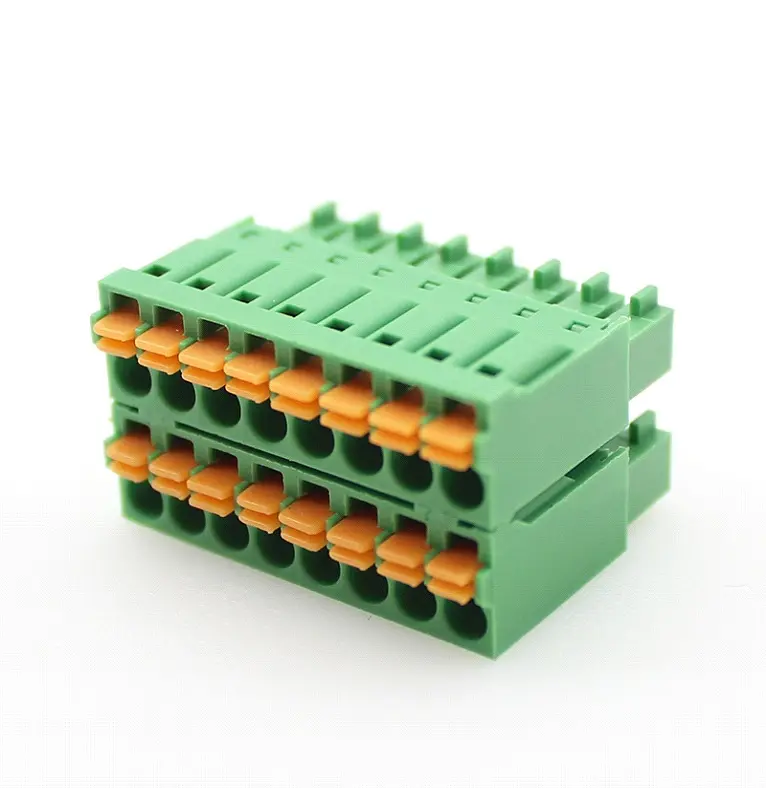
With their time-saving design and reliable connectivity, push-in terminal block connectors are an excellent choice for modern electrical systems.

How to Choose a Terminal Block Manufacturer
Selecting the right terminal block manufacturer is crucial for ensuring the reliability, durability, and efficiency of your electrical connections. Whether you need terminal block connectors for industrial automation, energy systems, or PCB applications, finding a reputable supplier is essential. Here’s a guide to help you make the best choice.
- Evaluate Product Quality and Certifications
The quality of terminal block connectors directly impacts system performance. Look for manufacturers that meet international safety and quality standards, such as:- UL (Underwriters Laboratories) certification
- ISO 9001 for quality management
- RoHS compliance for environmental safety
- Consider Manufacturing Capabilities
A reliable terminal block manufacturershould have:- Advanced production technology
- High-precision molding and assembly
- Rigorous quality control testing
Manufacturers with automated production lines can ensure consistent quality and faster delivery times.
- Evaluate Product Quality and Certifications
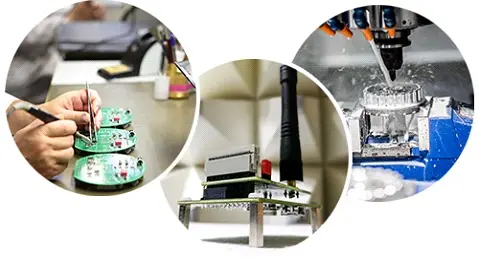
- Check Lead Times and Supply Chain Efficiency
- Evaluate Pricing and Cost Efficiency
- Look for Excellent Customer Support
Conclusion
Learn more about our Pluggable Terminal Block Products:

